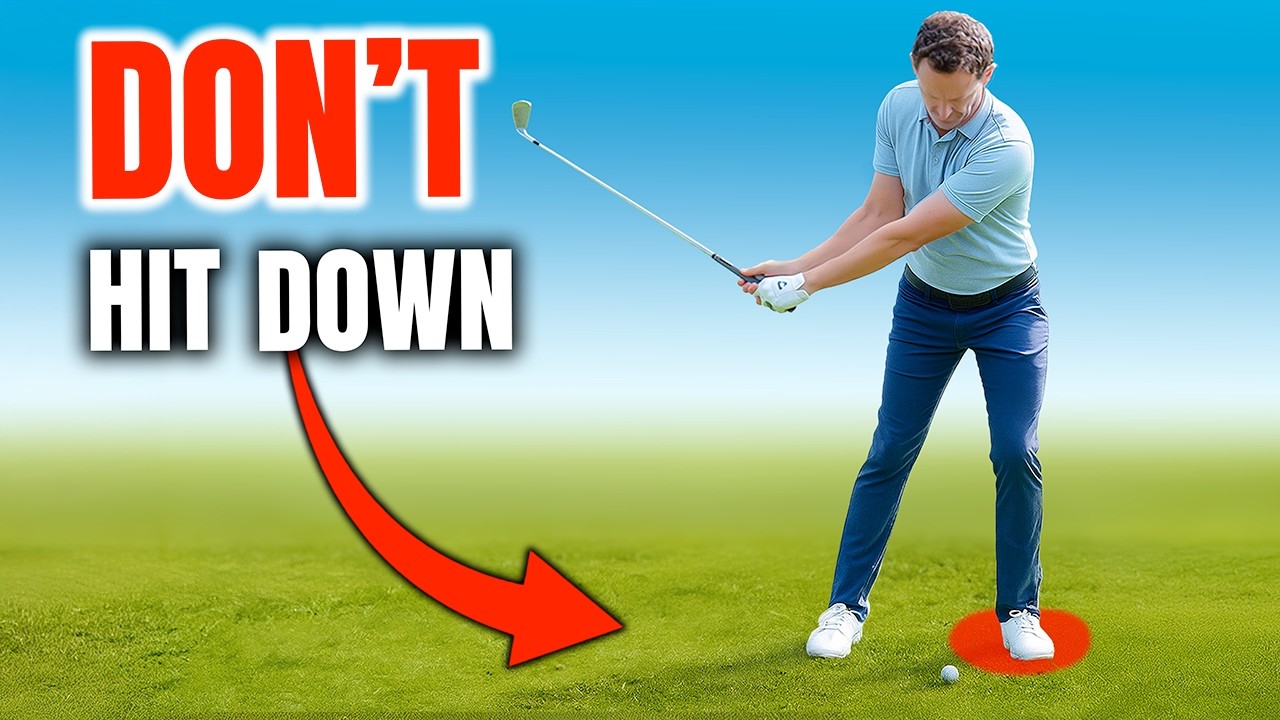
Unlock the Secret to Pure Iron Striking! Struggling to strike your irons cleanly? Learn the right techniques to improve your game by mastering the natural downward stroke while incorporating a powerful upward pivot for effortless power. Let’s dive into the lessons that will revolutionize your iron play.
Table of Contents
- Understand the Misconception
- Learn the Feel with Your Short Game
- Single Trail Arm for Steepness
- Feel the Rhythm with Both Hands
- Transfer Short Game Feel to Irons
- Use Simple At-Home Tools
- Pattern into Full Swing and Driver
- Consistent Practice Plan
- Troubleshooting Common Problems
- Practice on the Course
- Summary Checklist
Step 1: Understand the Misconception and What the Best Players Do
Many golfers believe in “hitting down,” but this can lead to tension and poor strikes if misapplied. Discover how top players actually use an upward body pivot to generate a controlled downward strike, ensuring both consistent ball contact and accelerated swing speed through impact.
Step 2: Learn the Feel with Your Short Game
The best place to start mastering this feel is your short game. Focus on the “down on the backswing, up through impact” approach with basic chip and pitch shots. Key setup tips include ball positioning slightly back and using a body pivot rather than wrist action.
Step 3: Add the Trail-Hand Single Arm
Switch to using the trail hand alone to feel a steeper angle and maintain a forward lean. It emphasizes rotation and helps refine the path and low point control in your swing.
Step 4: Join Both Hands for Combined Rhythm
Integrate both hands and focus on the “down-up” pattern. This results in effective transitions and a predictable strike, based on the drills practiced.
Step 5: Transfer the Short Game Feel to Your Irons
Apply learned patterns from your short game into full iron swings. Adjust ball position for a consistent downward low point and use the pelvis-forward drill for precision.
Step 6: Use Simple At-Home Tools
Incorporate an alignment stick and single-arm drills. These tools reinforce the proper sequence of actions, helping you master the indispensable “low hands” technique at home or on a practice green.
Step 7: Build the Pattern into Full Swing and Driver
A versatile approach that also benefits your driver swing by leveraging the “catapult” effect, driven by body rotation, ensuring both power and control off the tee.
Step 8: A Simple Practice Plan for Consistency
- Days 1-2: Focus on single-arm drills to solidify the down-up rhythm.
- Days 3-4: Use both hands with an alignment stick to refine placement.
- Days 5-6: Employ iron drills to maintain pelvis position upright through the shot.
- Day 7: Practice complete swings while prioritizing rhythm and transitional flow.
Step 9: Troubleshooting Common Problems
- Fatting Shots? Shift pelvis forward to adjust low point control.
- Thinning Shots? Check hand positioning and avoid premature upper body lift.
- Loss of Power? Concentrate on rising pivot and sequence, not arm strength.
- Unnatural Rhythm? Break steps into manageable segments; repeat as needed to internalize feel.
Step 10: How to Practice This on the Course
Begin with focused chipping, then transition to iron play, ensuring the proper sensation carries through each stage. Avoid overthinking mechanics; instead, trust your body’s movement memory.
Summary Checklist to Strike Your Irons
- Establish pelvis forward for consistent low point control.
- Strengthen down-up rhythm with isolated drills.
- Maintain trail knee stability.
- Finish swings tall with rotational sequence.
- Leverage alignment stick for low point visualization.
- Gradually progress from short game to full swings and driver use.
Through dedicated practice, embrace this methodology to transform your golf game. By focusing on rhythm and body pivot rather than force, enjoy clean, precise, and powerful iron shots that will elevate your performance across the course.


0 Comments